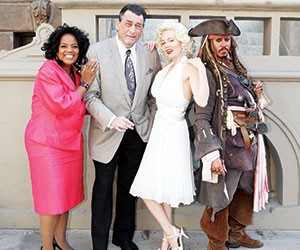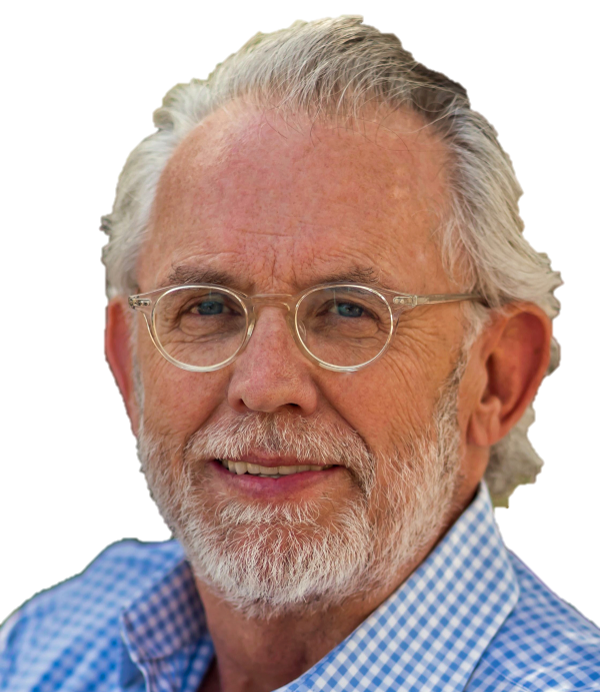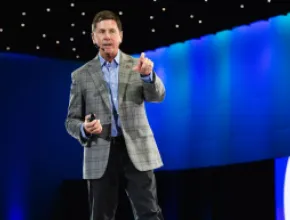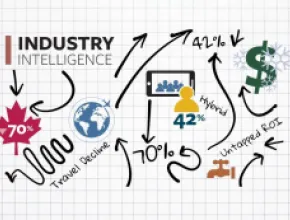“The rule is very simple: People don’t pay attention to boring things. So if you really want to have a lousy meeting, make sure it’s boring.” – John Medina, author of Brain Rules: 12 Principles for Surviving and Thriving at Work, Home and School.
At my company, EventGenuity, the mantra is “There’s No Business that’s NOT Show Business.”
What do we mean? No matter what business you’re in, there will come a time when you need to educate, inform or motivate groups of people. Whether your group consists of customers, members, shareholders, employees or clients, there’s nothing less at stake than your bottom line. We believe that in today’s ultra-connected world, attendees expect—and content requires—more than a talking head, projector and screen.
Experience happens in general sessions, breakouts, exhibit halls, networking events, motorcoach transfers, even in hallways and “whitespace” between scheduled programming.
In the PSAV whitepaper “Mindful Event Design: The Psychology of Physical Meeting Environments”, authors Andrea Sullivan and Janet Sperstad tell us the following:
“Attendees go to conventions and tradeshows to discover new products, learn about the current state of the industry, further their education and career, network with colleagues, gain inspiration, gather information, and have their questions answered. Exhibitors are there to gain brand recognition, nurture existing business relationships and generate leads for new relationships, influence buying decisions and create motivation for action. What convention designers and exhibitors must do, then, is to create experiences that enable and empower all participants to achieve their objectives.”
Incorporating the physical environment into meeting and event strategy pays dividends. Having said that, sizzle is zilch without the steak.
Well-thought-out venue, lighting, music and other environmental choices add nothing if not integrated in initial phases of planning toward event objectives. A holistic approach incorporating event environment and content delivery strategy into the early development of logistics planning provides an opportunity to elevate the experience and more effectively engage attendee attention.
We recently managed a conference in Hollywood, Calif., for a corporate client. The theme was “Think Different: Be Bold.” They asked us to “shake things up.” Working closely with internal planners we applied a variety of methods to energize and help inspire attendees throughout the conference. Here are a couple of examples:
- In the past, the opening reception was held in the headquarters hotel. There were drinks and dinner, a few remarks from the CEO and recognition speeches. This year, we took them to the iconic Sunset Tower, on Sunset Boulevard, until recently the home of the Vanity Fair Oscar Party. The space and stories about former residents such as Howard Hughes, John Wayne, Billie Burke, Marilyn Monroe, Errol Flynn, Elizabeth Taylor, Frank Sinatra, Paulette Goddard—and even gangster Bugsy Siegel—contributed a mood of Old Hollywood. Following cocktails, the inside/outside space allowed us to use the pool area to showcase the Aqualillies, an Esther Williams-inspired synchronized swim act. The sun set as the performance was ending, and the stunning view of downtown LA as the sun faded provided an unforgettable backdrop to an only-in-Hollywood evening.
- In general sessions, we combined video projection mapping on “the largest screen ever in the venue,” lighting and alternative seating to set different moods for each session.
- For the vendor expo, we moved what had always been a traditional trade show to the “New York Streets” lot at historic Paramount Studios. Seen in countless television shows, movies, advertisements and music videos, the set gave us the opportunity to turn the event into a highlight of the conference. We staged the expo as a New York street fair, using colorful large umbrellas and table coverings to separate sections. We identified vendor exhibit spaces with “Walk of Fame” stars. Look-alikes of Marilyn Monroe, Robert DeNiro, Oprah and Captain Jack Sparrow served as hosts and photo ops. Celebrity chef Wolfgang Puck catered the luncheon, with studio tours offered following the expo.
For this client, costs for these events were in line with previous budgets. Imagination, planning and a willingness to take risks—not money—made them memorable.
We’ve also had positive response incorporating “unconference” principles to portions of traditional meetings
Unconferences are participant-driven. Typically at an unconference, the agenda is created by the attendees at the beginning of the meeting. Anyone who wants to initiate a discussion on a topic can claim a time and a space. Unconferences typically feature open discussions rather than having a single speaker at the front of the room giving a talk, although any format is permitted.
An unconference can be conducted using a number of facilitation styles. We like “Open Space,” which is driven by four guiding principles and one law.
The Four Principles:
Whoever comes are the right people.
Whatever happens is the only thing that could have happened.
When it starts is the right time.
When it’s over it’s over.
The Law of Two Feet
If people find themselves in situations where they are neither learning nor contributing, they are responsible for moving to another location—using their two feet to find a place where their participation is more meaningful.
Choices you make in the planning process can have a profound effect on the attendee experience. Jeff Hurt from Velvet Chainsaw put it this way:
“Conferences that place people, rather than content or logistics, at the center of their model will thrive and outperform others in the future.
Attendees are demanding and are now expecting more time to connect and communicate with others at the event. They are taking the experience into their own hands and setting up meetings with others to learn, connect and discuss business. They are avoiding the traditional conference education session in favor of connecting with others.
Successful conferences focus less on logistics and more on creating experiences that foster communication, interactions and relationship-building for their attendees. They focus less on providing experiences that transfer information and more on experiences that will allow people to discuss content, share stories and build connections.
This means designing experiences that intentionally promote discussion, communication, networking and relationship-building. This means less talking heads and more rooms buzzing with energy and sound as people talk to each other one-on-one or in small groups.”
Are you stuck on the “we’ve always done it this way” merry-go-round? With imagination, planning and the right partners, your meetings can engage, excite and energize attendees on the way to realizing successful event outcomes.
MICHAEL OWEN is CEO of EventGenuity and a longtime expert in the meetings and events industry. He will be sharing more insights on the attendee experience and fielding questions from listeners during an upcoming May webinar.
UPCOMING FREE WEBINAR
The Attendee Experience: Making Your Show Count
May 27, 2015 | 1:00 PM EDT
www.meetingstoday.com/Webinars







